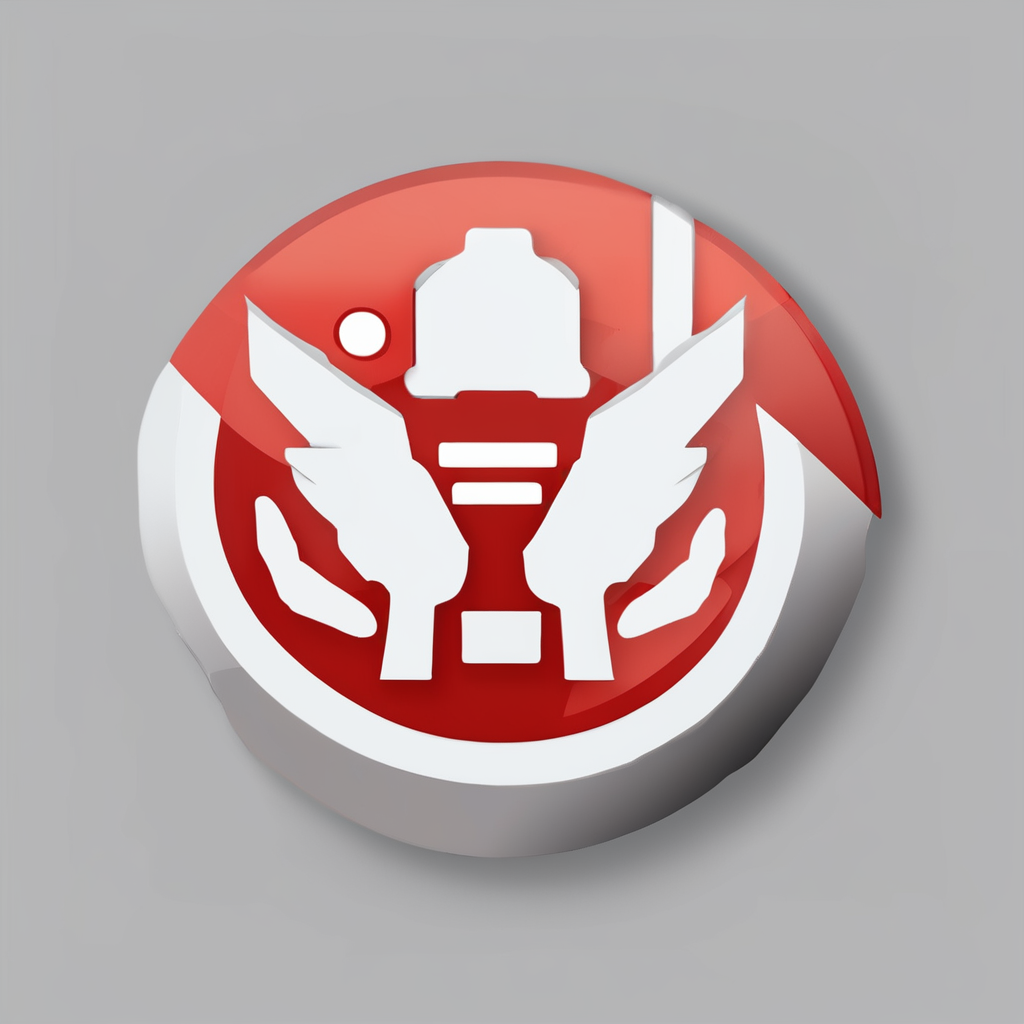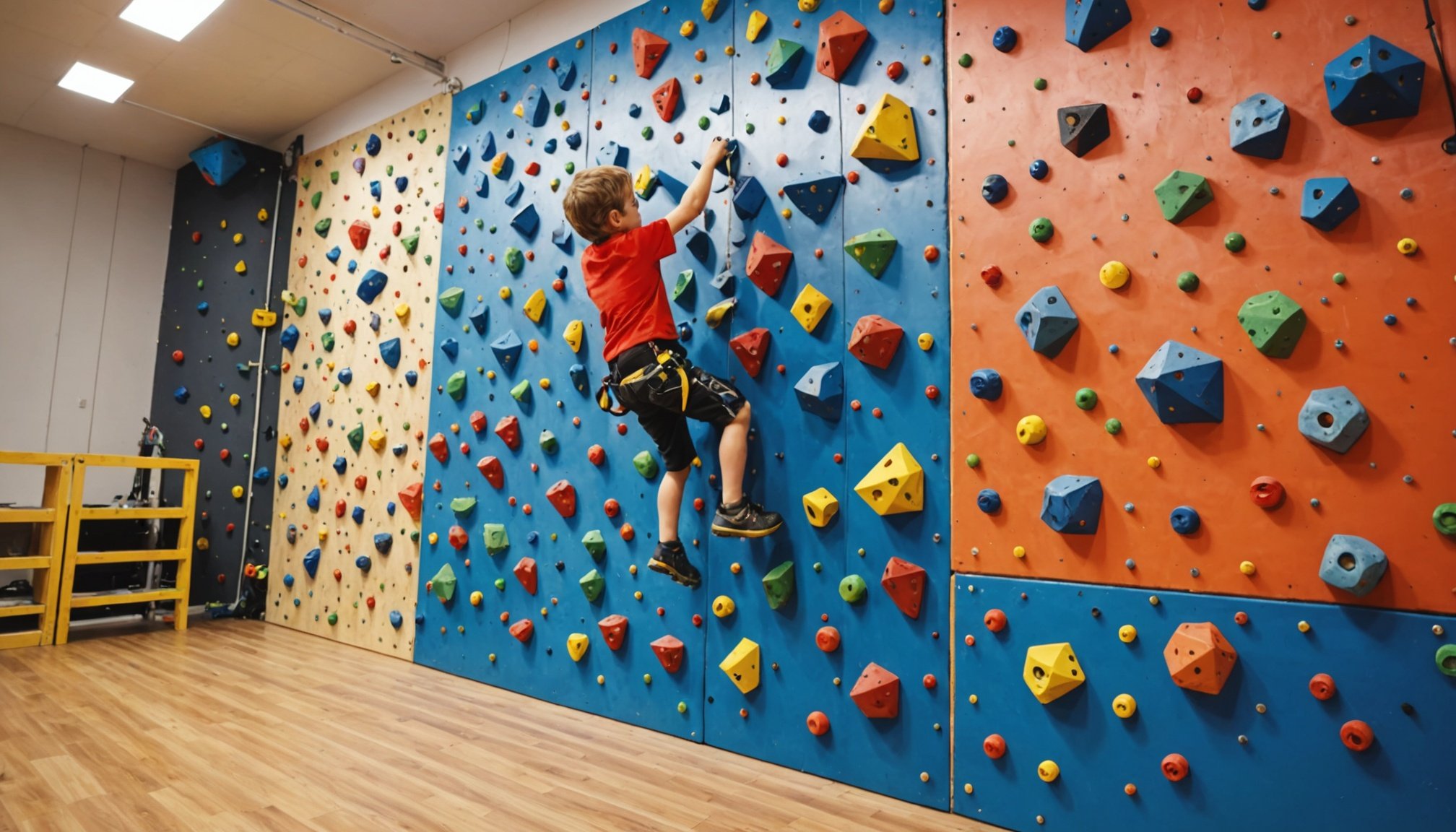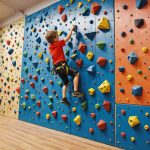The Ultimate Guide: Create a Thrilling and Secure Indoor Climbing Wall for Energetic Kids
Creating an indoor climbing wall for kids is an excellent way to encourage physical activity, problem-solving skills, and a sense of adventure right in the comfort of your home. Here’s a comprehensive guide to help you design, build, and ensure the safety of your indoor climbing wall.
Planning Your Indoor Climbing Wall
Before you start building, it’s crucial to plan your project carefully. Here are some key considerations to make:
Also read : Your complete handbook: build a safe and exciting indoor climbing wall for active kids
How Much Space is Required?
When it comes to building a climbing wall for kids, the space you have available is a critical factor. A minimum height of 8 feet is recommended, but even smaller walls can be fun and effective. For width, 8-10 feet is a good range, but it can vary depending on your available space[1].
| Dimension | Recommendation |
|---|---|
| Height | Minimum 8 feet |
| Width | 8-10 feet |
| Clear Space | 6-8 feet in front |
| Ceiling Height | Add 2 feet to wall height for safety |
Choosing the Right Location
The location of your climbing wall is vital for both safety and enjoyment. Here are some tips:
Also to see : Revamp Your Kitchen: Chic Ideas for Using Recycled Glass Countertops
- Good Airflow and Light: Garages or rooms with natural light are ideal. Basements can work well too, but ensure there is no moisture issue.
- Floor Stability: The floor must be able to hold the weight of the wall and the climbers.
- Noise Consideration: Climbing can be loud, so choose a location where noise won’t be a problem[1].
Building Your Climbing Wall
Building a climbing wall involves several steps, each crucial for the safety and functionality of the wall.
Materials Needed
Here’s a list of materials you’ll need:
- Plywood Panels: For the wall surface
- 2×4 Lumber: For framing
- T-nuts and Bolts: For securing climbing holds
- Climbing Holds: Various sizes and types
- Safety Gear: Crash pads, safety mats, etc.
- Paint and Tools: For preparation and installation[1].
Step-by-Step Installation
Here’s a brief overview of the installation process:
- Cutting Lumber:
- Measure and cut 2x4s to the appropriate lengths.
- This is especially important if you’re working in tight spaces like basements[1].
- Framing the Wall:
- Pre-drill holes in the 2x4s and secure them to studs using screws.
- Ensure the framing is level and stable[1].
- Preparing Plywood Panels:
- Trim plywood sheets to fit the wall dimensions.
- Mark a grid for T-nut placement using chalk lines and a tape measure.
- Drill pilot holes for the grid from the back to minimize tear-out[1].
- Installing T-nuts:
- Hammer T-nuts into the drilled holes, ensuring a snug fit.
- Use a blanket to protect the front face of the plywood during installation[1].
- Painting the Panels:
- Apply durable floor paint to the plywood for aesthetic and functional purposes.
- Follow the paint manufacturer’s instructions for coats and drying times[1].
- Attaching Plywood to the Frame:
- Pre-drill and countersink screw holes along the edges of the plywood.
- Secure the plywood to the 2×4 frame with screws, ensuring a flush finish[1].
- Adding Climbing Holds:
- Bolt holds into the T-nuts using an Allen wrench.
- Optionally, stabilize holds with additional screws once the layout is finalized[1].
Ensuring Safety
Safety is paramount when it comes to indoor climbing walls, especially for kids.
Essential Safety Features
Here are some must-have safety features:
-
Floor Protection:
-
Crash pads – at least 4 inches thick
-
Safety mats around the edges
-
Non-slip surfacing
-
Extra padding at the wall base[1].
-
Wall Safety:
-
Weight-tested anchor points
-
Regular bolt checks
-
Stable frame mounts
-
Proper wall backing[1].
-
Regular Checks:
-
Test holds monthly
-
Check frame stability
-
Look for loose bolts
-
Clean holds often[1].
-
Fall Zone Rules:
-
Keep the area clear always
-
Mark off the climbing space
-
Good lighting setup
-
Keep a first aid kit nearby[1].
Safety Gear and Communication
Proper gear and communication are crucial for safe climbing:
- Wear Proper Climbing Gear: Climbing shoes, harness, chalk bag, and optionally a helmet[4].
- Inspect Your Belay System: Double-check knots, test the rope, and confirm the belay device setup[4].
- Master Proper Climbing Techniques: Use your legs, maintain three points of contact, and plan your route[4].
- Communicate Effectively: Use standard phrases like “On belay?” and “Climbing!” and maintain verbal communication during the climb[4].
Customizing Your Climbing Wall
Once the basic setup is complete, you can customize your wall to make it more engaging and challenging for kids.
Adding Variety and Fun
Here are some ideas to make your wall more exciting:
- Mix Different Hold Sizes: Use jugs for easy moves and crimps for harder ones.
- Set Color-Coded Paths: Create paths for varied skill levels.
- Add Volumes: Use wooden shapes to change wall features.
- Install LED Strips: Light up specific routes for a more dynamic experience.
- Create a Tick List Board: Track climbs and progress.
- Add Grip Tape Sections: For foot placement and additional challenges[1].
Examples and Practical Tips
Here are some practical tips and examples to help you create an ideal climbing wall for kids:
Case Study: Home Climbing Wall
“I started with a small 6×8 wall in my garage, and it’s been perfect for year-round use. The natural light helps me see better, and my car still fits in the garage. For kids, it’s essential to keep the setup flexible and fun. Start with a basic setup, then add features as you learn what works best for their style,” says a parent who built a DIY climbing wall[1].
Using Climbing Wall Overlays
For a simpler and more versatile option, consider using climbing wall overlays. These can be attached to various surfaces like Tumbl Trak’s Power Launch or Practice Mat. They are made of firm foam blocks covered with vinyl and are sturdy enough to hold climbers of all ages[5].
Creating an indoor climbing wall for kids is a rewarding project that can provide endless hours of fun and physical activity. By following these steps and ensuring safety, you can create a space that fosters adventure, problem-solving skills, and gross motor development.
Final Tips
- Make Sure to Double-Check Everything: Before each session, test every hold and ensure the frame is stable.
- Keep it Fun and Flexible: Start with a basic setup and add features as you go along.
- Involve Your Kids in the Process: Let them help with the design and installation to make it a family project.
With the right planning, materials, and safety measures, your indoor climbing wall can become a central part of your home playground, offering a thrilling and secure environment for your energetic kids to play and grow.








